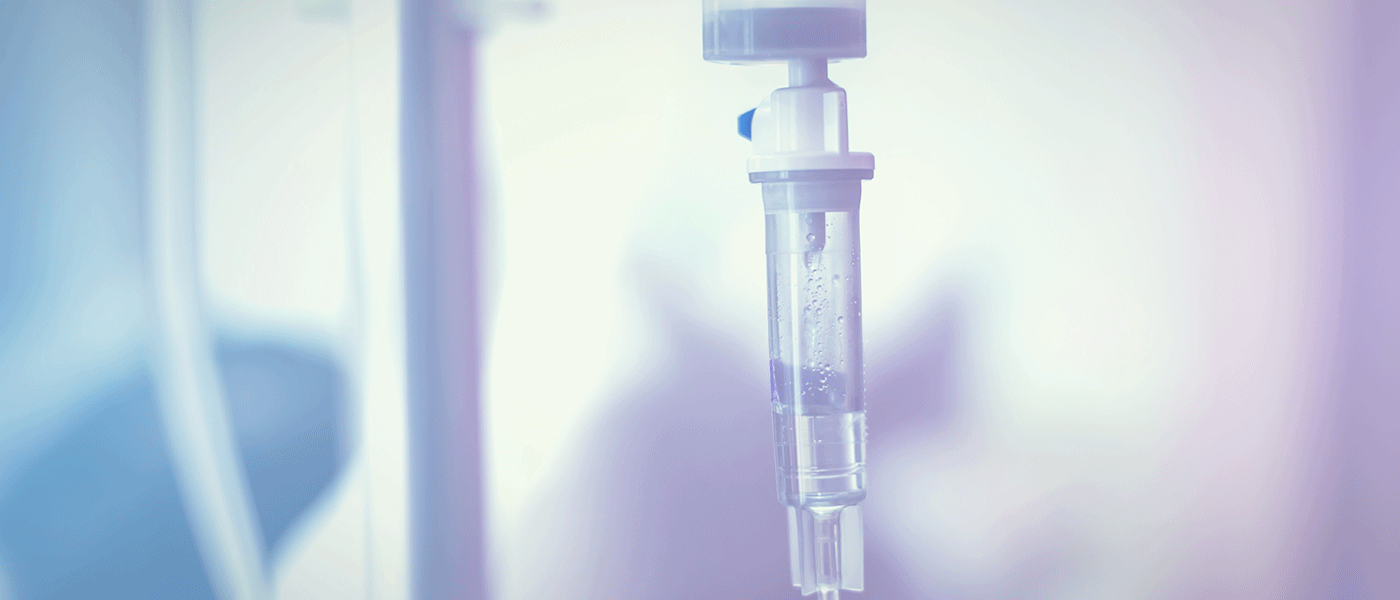Will Ketamine Be A Breakthrough Drug for PTSD?
A fresh generation of fast-acting anti-depressants is in the offing, says John H. Krystal, M.D., chair of the Department of Psychiatry at Yale University School of Medicine—and perhaps also much-needed medications for post-traumatic stress disorder (PTSD).
In a webinar broadcast by the Brain & Behavior Research Foundation on June 12, 2018, Dr. Krystal explained how basic research on the biology of PTSD and depression led to a trial he is currently leading focusing on veterans and active-duty military with PTSD. His team will study the dose-related safety and effectiveness of 4 weeks of ketamine infusions. Ketamine “acts rapidly, it’s anti-suicidal, [and] it works for people who don’t respond to other kinds of treatment,” he said.
Dr. Krystal, a member of BBRF’s Scientific Council and the recipient of BBRF Distinguished Investigator grants in 2006 and 2000 and an Independent Investigator grant in 1997, began research with ketamine in the late 1980s. “Ketamine is the tip of an iceberg for potentially a whole new generation of pharmacologic approaches for mood disorders,” he said.
The Need for New Options
This month, the manufacturer of a nasal spray variant of ketamine called esketamine asked the Food and Drug Administration to approve it as a treatment for severe depression. If the agency agrees, esketamine will be the first approved new medication in decades to treat severe depression.
Yale-New Haven Hospital began dispensing ketamine as an off-label treatment for severe depression in 2014.
Doctors know ketamine as an intravenous anesthetic used most often on children and animals and abused as the party drug sometimes referred to as “Special K.” In the early 1990s, it became clear that slow infusions of ketamine at very low doses gave quick but brief relief to patients with severe depression.
Dr. Krystal noted evidence that ketamine may work especially quickly in people with bipolar depression and offers hope for others in need of new options: people who fail to respond to electroconvulsive therapy, people with a psychotic depression, people with severe anxiety or agitation as well as those with severe pain.
PTSD patients badly need a new solution, he explained: they only see about a 10% reduction beyond placebo with current anti-depressants. Combat-related symptoms are especially tough. The Department of Veteran Affairs funded two large trials of promising drugs, Prasozin and Risperidone, but they proved ineffective. Moving forward, Dr. Krystal explained, requires turning to “a deeper understanding of the biology” underlying depression and PTSD.
Is Glutamate the Important Neurotransmitter in Depression and PTSD?
Current anti-depressants boost the availability of serotonin or serotonin and norepinephrine, two neurotransmitters that enable neurons in the brain to communicate. It has been proposed that depression involves a paucity of those neurotransmitters. Dr. Krystal, with his colleague Dennis Charney, M.D., also a member of the BBRF Scientific Council and Dean of the Icahn School of Medicine at Mount Sinai in New York, found evidence otherwise. “He led a series of studies showing that depleting the body of serotonin, or depleting the body of norepinephrine, or [both], did not produce depression in people,” Dr. Krystal explained. “This suggested to us that maybe the biology of depression and stress-related disorders didn't primarily live in the primitive parts of the brain that use serotonin or norepinephrine to communicate, but rather in the higher centers of the brain, the cerebral cortex, where glutamate is the predominant neurotransmitter.”
Both PTSD and depression can be caused by stress. Releasing cortisol is part of the stress response, our reaction to danger. Cortisol “can be harmful if it's too much for too long, but it may also be harmful if it's too little for too brief a period,” Dr. Krystal said. In unipolar depression, we get a continual bath of cortisol, which is abnormal. In people with PTSD, not enough cortisol may have been released at moments of extreme stress.
The result may be a loss of connection-points between neurons, called synapses. Dr. Krystal found evidence of this loss in a pioneering MRI brain scan study of PTSD patients published in 1995. “Nowadays, using functional MRI, we can show that functional connections in the brain are reduced in PTSD in relation to or correlated with the overall severity of PTSD, and symptoms such as numbing and hyper arousal,” he said.
In both PTSD and depression, the brain evidently fails to remodel the lost connections. But over months of treatment with anti-depressants, brain scans show regrowth of dendritic spines—connection terminals and key players in the metabolism of glutamate.
Ketamine is thought by some to block the N-methyl-D-aspartate (NMDA) receptor, which binds glutamate. The temporary block may jolt the brain to release glutamate, prompting a cascade of regrowth and reorganization. For some people, a single dose of ketamine can make depression disappear for several days, or for as long as two weeks.
Dr. Krystal points out that this isn’t because of the initial euphoria that explains why people abuse the party drug Special K. “There's no ketamine in the body at the time when people are reporting the greatest clinical benefit,” he noted. The benefit is an after-effect, not yet understood scientifically.
Dissociation—feeling detached from one’s own body—and occasional nausea, two side-effects of ketamine, are easily managed in a clinic, “and we have not had cases of drug abuse,” Dr. Krystal said, referring to carefully controlled experimental use of ketamine in clinical settings. A many as three-quarters of severe depression patients who have tried ketamine infusions have found some relief. Over time, many need less frequent infusions: 40 percent of Yale’s patients come for infusions once a month or less often. The long-term effectiveness and impact of ketamine remain unproven.
“This new neurobiology of PTSD and depression suggests that there may be other mechanisms for treatment that may come from this line of research,” Dr. Krystal concluded. He hopes to have results from the PTSD trial by early 2020.
Contributed by Temma Ehrenfeld, science writer



